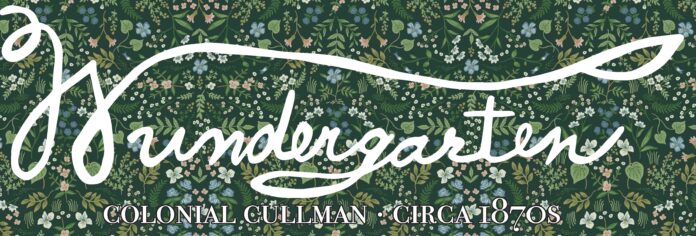THE “F-WORD” of THE ADULT ABCs of TREES is, I’m not freakin’ joking—FOOD CHAIN. (Yes, I know, I KNOW…FOOD CHAIN is two words.) Last week in a kid’s celebration of the new Sportsman Lake Tree Museum, THE ABCs of TREES rostered APPLE trees, BUTTERFLIES, CHERRY trees and 23 other tree-centric words for the sapling crowd.
THE ADULT ABCs of TREES, pardon this, branches out a bit. We are still hugging all the OAK trees, PINE trees and MAGNOLIAS, but we want to grow our grown-up knowledge about the importance of trees to our environment.
What does it mean to be “adult?” I wasn’t sure I knew (NO, YOU SHUT UP!) so I did the mature thing and googled it. “Psychology Today Magazine” (February 2017) offers some succinct ideas in an article I’ve forwarded to some rowdy rebels at this year’s, any year’s, Rock the South concert. It’s titled “8 Ways to Be an Adult.”
THE ADULT ABCs of TREES could include most, or all, of the “8 Ways to Be an Adult,” like “Don’t be a jerk. Take care of your own stuff. Take full responsibility for where you’re at in life. Love hard and responsibly.” Think of each of these admonishments as they relate to being an evolved adult sharing our gorgeous green planet with others.
THE ADULT ABCs of TREES
A is for ARBORETUM—the fancy name for the Sportsman Lake Tree Museum. It’s about three things: BEAUTIFICATION, EDUCATION and EXPLORATION. It’s a fun, gorgeous part of the FREE public park which is OPEN TO ALL every day of the year. Simply by strolling through the ARBORETUM, you’ll see something new and also see something familiar but with new eyes.
B is for BIODIVERSITY—We’re no. 4! We’re no. 4! That may not be the ambition for the Bama or Auburn football chant, but Alabama being the fourth state in the nation with the greatest number of different plants and animals deserves stadium-blasting braggin’ rights. (This may not be the most grown-up thinking, but now I want to find out which state is 50th in boring, biological sameness.)
C is for CATS—“Cats are predators; even if they are well fed, they hunt and kill other animals by instinct…In the United States, naturalists consider cats a threat to some species, especially songbirds. To limit this problem, cat owners can control their pets and make sure they are spayed or neutered to keep cat populations from growing.”—Paul Fleisher, “Ecology A to Z” (Please don’t share this article with cat-loving children. I really don’t want #KidsWithKittens dressed in their Garfield jammies, protesting with little picket signs and pelting me with Meow Mix.)
D is for DARWIN—“The Father of Evolutionary Biology.” Chuck theorized that all species of life have descended from a common ancestor, which is broadly accepted as a fundamental concept in science. Charles Darwin, the 19th century naturalist has been described as one of the most influential figures in human history. The idea of evolution he called “survival of the fittest” survives mightily today. Quoting Darwin—“The love for all living creatures is the most noble attribute of man.”
E is for ECOSYSTEM—which consists of all the organisms and the physical environment with which they interact. For example, when you are strolling through the “Tree Museum,” you are in an ecosystem with all the trees, mosses, ferns, grasses, insects, birds, butterflies, squirrels, rabbits, earthworms, etc. You are part of a thriving ecological system.
F is for FOOD CHAIN—which describes who eats whom in the wild. Here’s a quick example of a food chain: A rabbit eats grass. A fox eats the rabbit. When the fox dies, living bacteria eat the fox and return the nutrients which feed plants—like the grass another rabbit eats. It’s the (someone nudge Sir Elton John)…”Circle of Life.”
G is for GLOBAL WARMING—which is the concerning phenomenon of air temperatures increasing near the surface of Earth over the past two hundred years.
H is for HABITAT—all the resources supporting a living thing. For a plant in your garden, their habitat includes such things as: soil, moisture, range of temperatures and light intensity.
I is for INVASIVES—which at the Tree Museum are such things as Mahonia holly and English Ivy that are not native plants but have been intentionally introduced by humans. INVASIVE PLANTS make themselves so comfortably at home, they push some natives plants out. If such INVASIVES as kudzu or pampas grass are introduced into an American landscape, they should be contained and not allowed to overwhelm the natives.
J is for JUNIPER—a form of cypress evergreen shrub or tree. They are known for the ability to thrive in challenging environments. Juniper berries, which are actually the female seed cones, are used as spice, and give the very adult, Gin Martini, it’s distinctive, bracing flavor.
K is for KEYSTONE PLANTS—which are so important in a landscape that we introduced them in the kids’ ABCs of TREES, as well. Kids need to be learning to value KEYSTONE PLANTS in kindergarten (another great “K”-word). Dr. Douglas W. Tallamy, a professor of entomology and wildlife ecology at the University of Delaware, and the author of “THE NATURE OF OAKS: The Rich Ecology of Our Most Essential Native Tree,” thinks the greatest contribution his lab has made is the “KEYSTONE species concept.”
KEYSTONE PLANTS support a functional food web. Just a few plants are supporting caterpillars. Only 5% of our native plants support 75% of caterpillars; 14% of our native plants support 90% of the caterpillars. Here are some KEYSTONE PLANTS to treasure and help thrive: Goldenrod, Asters, Sunflowers, Oaks, Cherry trees, Willows, Birch trees, Elm trees and Cottonwood trees.
According to Dr. Tallamy, “Gardeners need to recognize that their little piece of the world is part of the future of conservation.” One person can shrink their lawn. One person can put in a pollinator garden. One person can take out their INVASIVE plants. And one person can put in KEYSTONE PLANTS.
L is for LITTER—and these great anti-LITTER slogans: “Be part of the solution, not the pollution.” “Feed the can, man.” “Slam dunk the junk.” “You think we like picking up after you?”
M is for MARSH—low-lying and seasonally water-logged terrain. Marshes are often at the edges of lakes and streams where they transition between aquatic and terrestrial ECOSYSTEMS. Plant-life in this area tends to be reeds and grasses. Woody plants in a MARSH tend to be shrubs rather than a swamp which supports trees.
N is for NATIVE PLANTS—a term that is generally understood in America to mean pre-European exploration.
O is for OAKS—(Quercus) with lots of cultivar choices. Hostas are not going to make an ecosystem collapse, but hostas don’t contribute much, either. If you can grow an oak tree or sponsor others to grow OAKS—please do.
P is for POLLINATORS—The added revenue to crop production from POLLINATORS (bees, bats, etc) in the U.S. is valued at $18 billion. Honeybees are our #1 POLLINATORS. Today, there are about 2.8 million honeybee hives in the United States.
Q is for QUIBOW—an old Scottish word meaning a “branch of a tree.”
R is for RECYCLE—which turns used things into other things. Recycling is—MAGIC.
S is for SOLAR ENERGY—of which there are five types, shared here for insomniacs and the YAW-YAW folks (see “Y”): Photovoltaic (PV), Solar Energy, Solar Thermal Energy, Concentrated Solar Power, Passive Solar Power, and Building-integrated Photovoltaics.
T is for TOPSOIL—which is the upper layer, about 5-10 inches deep. In the TOPSOIL you’ll generally find a high concentration of plant roots because it is where the most nutrients are.
U is for UpSLOPE—the area of the Sportsman Lake Tree Museum which supports many of the unique species for this Accredited Arboretum. The UpSLOPE has become a symbol of positive thinking and persistence. At the highest ridge of the UpSLOPE is the sun-blessed “Pollinator Rise.”
V is for VEGETATION—the plant life or total plant cover of an area.
W is for WILDLIFE—the living things (birds, mammals, fishes) that are neither human nor domesticated.
X is for XERISCAPE—the landscaping style that calls for drought-resistant plants to help conserve water.
Y is for YAW-YAW—a word the author Charles Dickens coined for a character who talked in an affected manner. (So, please don’t YAW-YAW and say “ABORETUM” and “XERISCAPE” in the same sentence.)
Z is for ZONATION—the distribution of plants or animals into specific zones based on things like altitude, longitude, latitude and depth. Jubilation is unlikely for those who place penguins and palms in the same zonation.
CELEBRATING IN THE WUNDERGARTEN This culinary storytelling series is stocked with plenty of cocktail recipes, but to accompany THE ADULT ABCs of TREES we proffer bracing beverages from
THE TREE MUSEUM CAFÉ’s NO-ALCOHOL BAR CART:
- FIGLIA FIORE FRIZZANT—canned cocktails with effervescence ($36 for a six-pack)
- THOMSON & SCOTT NOUGHTY SPARKLING ALCOHOL-FREE CHARDONNAY—($20) this is perfect for Mimosas at brunch and not feeling sluggish later
- TOST ALL-NATURAL ALCOHOL-FREE SPARKLING BEVERAGE—($31 per bottle or four-packs of picnic-sized onesies)—evokes the plant essences of ginger root, cranberries and white tea
- GHIA APERITIF—($38) for those who prefer cocktails with more tang than sweetness; hints of elderflower, rosemary and fig bring sophisticated complexity
- PROTEAU LUDLOW RED–($25) is for wine lovers with notes of wild berries and herbaceous flowers
- LYRE’S ITALIAN ORANGE—($36) will make a great “Holiday Open House” mocktail and gift
- DRAM HAIR OF THE DOG AROMATIC BITTERS—($18, dramapothecary.com) is a suggestion from “Eating Well Magazine,” which suggests trying it in sparkling water with a slice of fresh lime
THE SPORTSMAN LAKE TREE MUSEUM MULE
(Source: yummymummykitchen.com)
INGREDIENTS
- 1 1/2 cups crushed ice
- 1 cup ginger beer (diet ginger beer cuts the calories)
- 4 tbsp. fresh lime juice (2 medium limes)
- 1/3 cup club soda or sparkling water
- Fresh mint, for garnish
- 2 lime wedges, for garnish
DIRECTIONS
- Fill two copper mule mugs 2/3 full with ice.
- Top with ginger beer, lime juice and club soda.
- Stir to combine.
- Garnish with lime wedge and mint and enjoy immediately.
HAPPY AUGUST and AUF WIEDERSEHEN Y’ALL!
Find all columns in this series at www.cullmantribune.com/tag/celebrating-in-the-wundergarten.




















